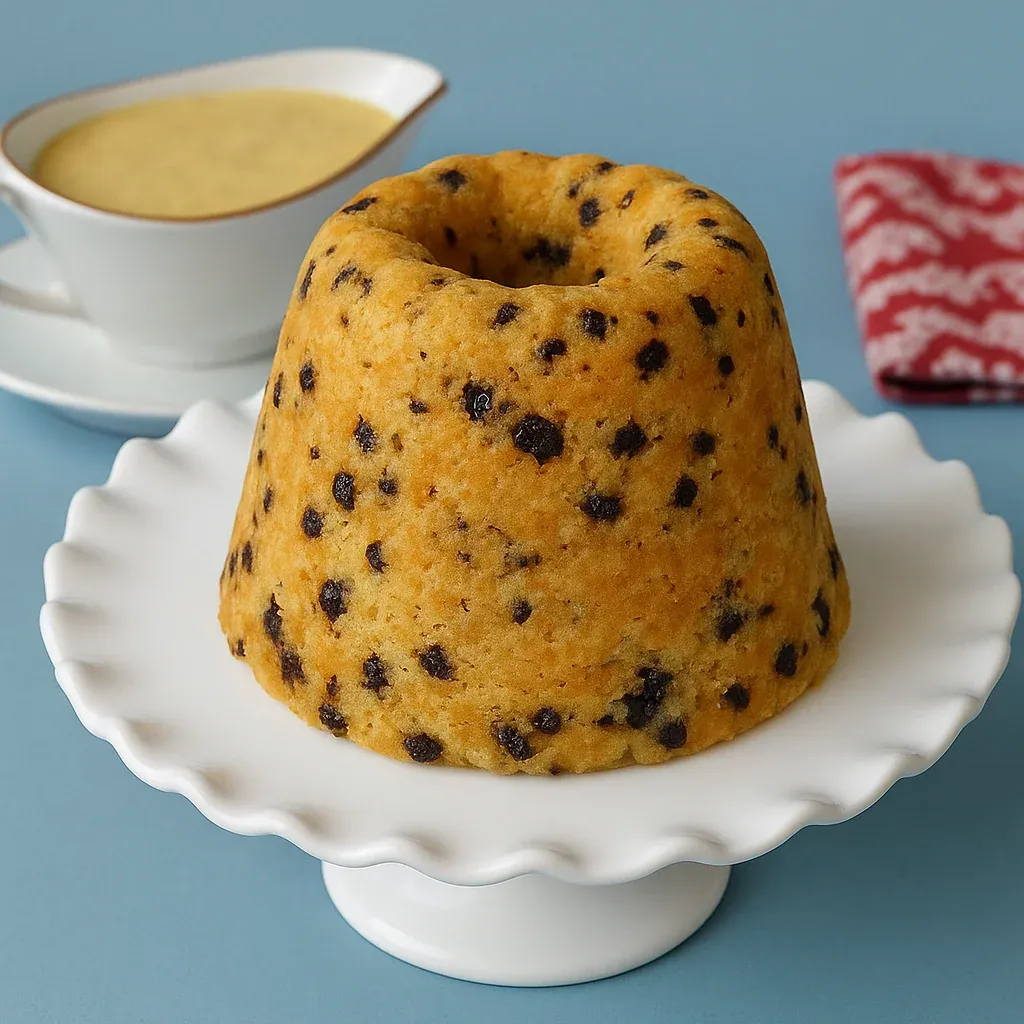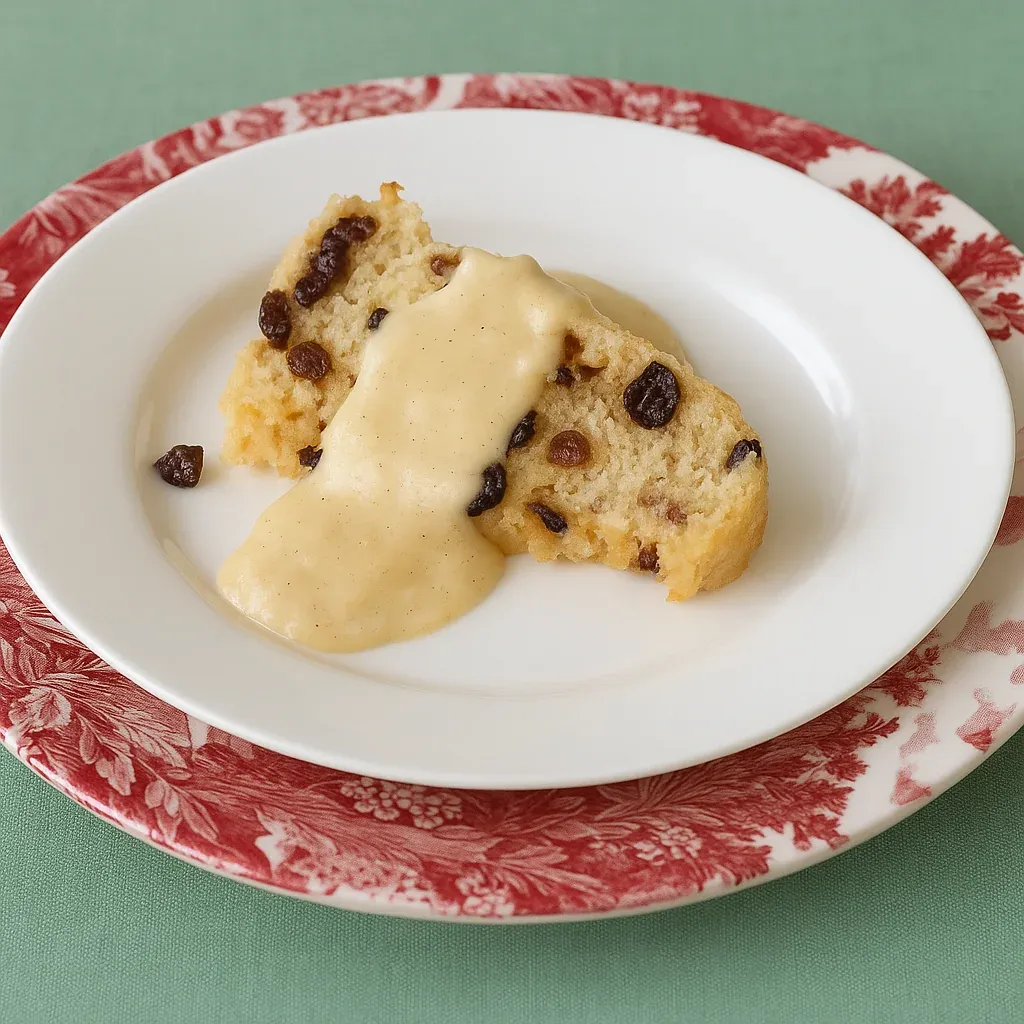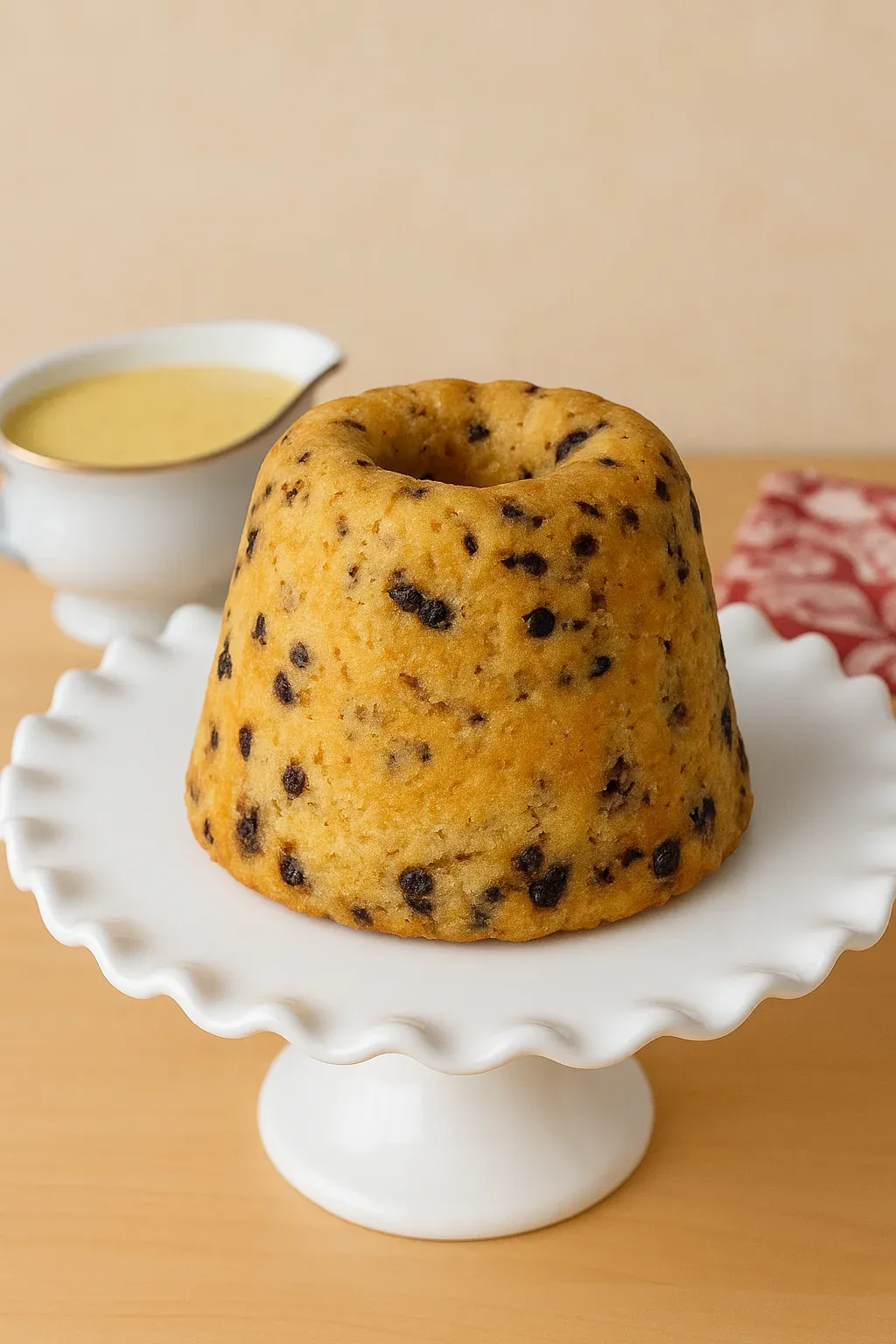 Pin
Pin
This Traditional Spotted Dick has been part of my culinary heritage for generations, offering the perfect balance of simple ingredients transformed into a gloriously comforting British dessert that never fails to bring smiles to my family table.
I first made this recipe during a particularly cold winter evening after my grandmother shared her handwritten recipe card with me. The warming aroma that filled my kitchen immediately transported me back to childhood Sunday lunches in England, and it has since become my signature dessert for holiday gatherings.
Ingredients
- All Purpose Flour: Forms the foundation of our pudding, providing the perfect structure for a tender crumb. Look for unbleached varieties for a more authentic flavor profile
- Baking Powder: Helps create that signature light and airy texture. Always check that yours is fresh for optimal rise
- Salt: Balances the sweetness and enhances all other flavors. Kosher salt works beautifully here
- Beef Suet: Delivers the traditional richness that makes Spotted Dick truly authentic. Find it at specialty British shops or use very cold grated butter as a reasonable substitute
- Caster Sugar: Provides sweetness without heaviness. Regular granulated sugar works fine if caster sugar is unavailable
- Dried Currants: Create the classic "spotted" appearance and add pops of natural sweetness throughout. Choose plump ones without added oils
- Milk: Binds everything together while adding moisture. Whole milk produces the best richness
- Vanilla Extract: Rounds out the flavor profile with warm notes. Pure extract rather than artificial gives best results
- Lemon Zest: Brightens the entire dessert with subtle citrus notes. Use organic lemons when possible for zesting
- English Custard Sauce: Completes the experience with creamy richness. Either homemade or quality store-bought works wonderfully
Step-by-Step Instructions
- Prepare the Steaming Setup:
- Position metal cookie cutters or a folded kitchen towel in the bottom of a large stockpot. This crucial step creates space beneath your pudding mold to prevent scorching and allows steam to circulate properly. Fill the pot with about 3 inches of water and bring to a gentle boil. Meanwhile, thoroughly grease a 1.6-liter pudding mold, making sure to reach all crevices to ensure clean release later.
- Mix the Dry Ingredients:
- Combine flour, sugar, baking powder, salt and suet in a food processor. Pulse until the mixture resembles coarse wet sand with small pebble-like pieces of fat distributed throughout. This texture is essential for creating the light, tender crumb characteristic of proper steamed puddings. Transfer this mixture to a spacious mixing bowl, making sure to scrape down all sides of the processor.
- Add Wet Ingredients and Currants:
- Pour in the milk, sprinkle in the lemon zest, add vanilla extract, and fold in the currants. Stir everything together with a wooden spoon using gentle but thorough motions until you achieve a thick, consistent batter without streaks of dry ingredients. The batter should be firm enough to hold its shape but soft enough to be easily spooned into the mold.
- Fill the Pudding Mold:
- Spoon the prepared batter into your greased pudding mold, pressing it down gently to eliminate air pockets while creating a level surface at the top. Leave approximately half an inch of headspace to allow for expansion during steaming. Secure the lid tightly, ensuring a proper seal to prevent water from seeping in during the steaming process.
- Steam the Pudding:
- Lower your sealed pudding mold carefully into the gently boiling water, ensuring that the water level reaches halfway up the sides of the mold. Reduce heat to maintain a steady simmer rather than a rolling boil. For authentic texture with suet, steam for 3-4 hours, checking water levels every 30 minutes and replenishing with boiling water as needed. For butter-based versions, 90 minutes typically suffices.
- Let the Pudding Rest:
- Remove the mold from the steaming pot using heatproof mitts or tongs and place on a cooling rack. Allow it to rest undisturbed for exactly 15 minutes, which helps the pudding structure stabilize before unmolding. This resting period significantly improves the final texture and prevents collapsing.
- Serve:
- Carefully invert the pudding onto a warmed serving plate by first loosening the edges with a butter knife if necessary. If properly prepared, it should release cleanly with a satisfying thump. Slice into generous wedges and serve immediately with warm custard sauce poured generously over each portion, allowing it to soak slightly into the warm pudding.

My grandmother insisted that the quality of the suet makes all the difference in this recipe. She would visit her local butcher specifically to request fresh beef suet which she would then grate herself rather than using the packaged varieties. I remember watching her hands work quickly as she told stories about making this pudding during wartime rationing, using whatever dried fruit was available and treasuring the rare occasions when proper ingredients could be found.
Historical Context
Spotted Dick emerged in British kitchens during the Victorian era, around the mid-19th century, when steamed puddings became popular due to their economical use of ingredients and ability to be cooked without an oven. The name likely derives from "dick" being a regional term for pudding, while "spotted" refers to the dried fruit studded throughout. Initially a humble workingman's dessert, it gained popularity across all social classes and became a symbol of British comfort food. The traditional use of suet reflected practical preservation techniques in pre-refrigeration times. Today, this dessert represents culinary heritage and evokes nostalgic connections to Britain's food traditions.

Storage and Reheating
Spotted Dick keeps remarkably well once prepared. Store any leftover pudding tightly wrapped in the refrigerator for up to 5 days. The flavors actually develop and improve over the first 24-48 hours. For reheating, slice individual portions and warm them in a microwave for 30-45 seconds, or place the entire pudding back in its mold and steam for 30 minutes until heated through. Alternatively, wrap portions in foil and heat in a 300°F oven for about 15 minutes. Always serve with freshly warmed custard rather than reheating pudding with custard already applied. Spotted Dick also freezes exceptionally well for up to three months. Thaw completely in the refrigerator overnight before reheating for best texture.
Ingredient Substitutions
While traditional ingredients create the most authentic experience, adaptations can still produce excellent results. If beef suet proves difficult to source, use very cold butter grated on the large holes of a box grater. For dietary preferences, vegetable suet makes a suitable alternative. Currants can be replaced with raisins, sultanas, or even dried cranberries for a modern twist. Dairy-free versions work well with almond or oat milk. Gluten-free flour blends formulated for baking can substitute wheat flour when needed, though the texture becomes slightly denser. For a richer version, replace half the milk with heavy cream. Regardless of substitutions, maintain the proportion of wet to dry ingredients for proper consistency.
Recipe FAQs
- → What is Spotted Dick made of?
Spotted Dick is made using a mixture of suet (or butter), flour, sugar, baking powder, salt, dried currants, milk, lemon zest, and vanilla extract. The 'spots' in its name refer to the currants, which dot the pudding.
- → How is Spotted Dick traditionally served?
It is traditionally served warm with a generous drizzle of creamy English custard, which enhances its rich, spongy texture and sweet, tangy flavor.
- → Can I substitute butter for suet in Spotted Dick?
Yes, butter can be used as a substitute for suet. However, suet provides a more authentic texture and flavor for traditional results.
- → How long does Spotted Dick need to steam?
If using suet, steam the pudding for 3-4 hours for the best texture. With butter, steaming for about 90 minutes is sufficient.
- → Can I customize Spotted Dick with other ingredients?
Yes, you can customize the dessert by using dried fruits like raisins or sultanas instead of currants, or add spices such as cinnamon or nutmeg for extra warmth.
- → How should I store leftover Spotted Dick?
Store leftovers in an airtight container in the refrigerator for up to three days. Reheat in a steamer or microwave until warmed through before serving.
